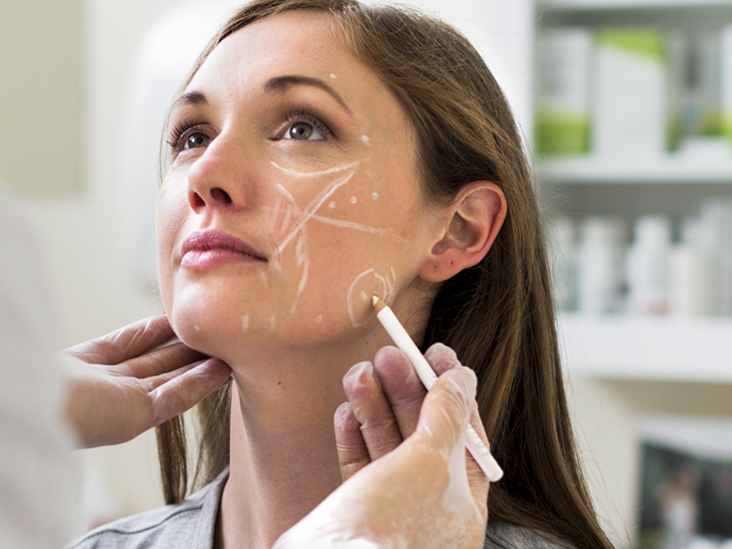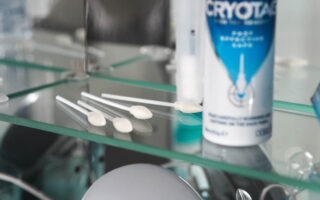With the rise of contouring, highlighting, and a whole new level of makeup artistry, it’s not surprising that many women are turning to beauty treatments such as facials and skincare. One popular facial procedure is called a hyaluronic injection – which uses substances to plump up skin and restore some balance to the surface.
What are Hyaluronic Injections?
Table of Contents
Hyaluronic injections for face is a popular skincare treatment that use hyaluronic acid to fill in wrinkles and improve the appearance of skin. Hyaluronic acid is a naturally occurring molecule found in the body. It is responsible for helping reduce inflammation and keeping skin moisturized.
The hyaluronic injection procedure typically involves injecting a small amount of hyaluronic acid into the skin using a needle. The goal is to create a temporary lifting and restoration of collagen and elasticity, which results in smoother, younger-looking skin. There are several benefits to using hyaluronic injections for the face:
1. They can improve the appearance of wrinkles and age spots by restoring lost elasticity and collagen.
2. They can reduce the appearance of scars and blemishes by improving blood circulation and reducing swelling.
3. They can help improve the texture, tone, and overall appearance of skin by promoting hydration and restoring suppleness.
What is the Purpose of Hyaluronic Injections for the Face?
There are many benefits to using hyaluronic injections for the face. They can improve the appearance of wrinkles, age spots, and other skin conditions. Hyaluronic injections also help fill in dry areas and restore lost elasticity.
Hyaluronic injections are most commonly used to treat moderate to severe facial wrinkles. They work by adding volume to thinned out skin cells and helping them hold up better under stress. This helps to reduce the appearance of lines and wrinkles and give your face a more youthful appearance.
Hyaluronic injections can also be used to treat age spots and other skin conditions such as rosacea. By increasing the production of hyaluronic acid, these treatments can reduce the symptoms of these conditions while promoting healing.
Additionally, hyaluronic injections can be used to temporarily improve the look of scars or other marks on the face. By stimulating collagen production, these treatments help to restore elasticity and reduce inflammation.
Types of Hyaluronic Injections:
There are three main types of hyaluronic injections:
1. Dermal filler: This is a low-cost and easy procedure that uses a syringe to inject a small amount of hyaluronic acid into the skin. The results are generally short-term, and the filler may need to be repeated.
2. Hyaluronidase: This is a more expensive option that uses an enzyme to break down the hyaluronic acid in the skin, causing it to swell. The results are usually longer-lasting, but may also cause some side effects, such as redness and swelling.
3. Micro dialysis: This is a more advanced option that uses tiny tubes inserted under the skin to access and remove the hyaluronic acid. While it tends to be more expensive, it has greater long-term results than either dermal filler or hyaluronidase injections.
How to Get It Done?
Looking for a skincare secret to keep your skin looking young and healthy? Try hyaluronic injections! These injections use a hyaluronic acid solution to help the skin retain water and improve its appearance.
There are several ways to get these injections:
1. At a dermatologist’s office. This is the most common way to get them, and it’s usually done as a series of one or two treatments over a period of six to eight weeks. The dermatologist will mix the hyaluronic acid solution with local anesthetic before injecting it into the skin.
2. At a spa. If you don’t have access to a dermatologist or can’t wait that long, you can also get hyaluronic injections at a spa. They’ll use smaller needles so the treatment is less invasive and there’s less chance of side effects. However, spa treatments tend to be more expensive than doctor appointments.
3. With injectable fillers such as Juvéderm® (a filler used in facial rejuvenation) or Restylane® (used for wrinkles and nasolabial folds). These types of injectables use a similar technique to hyaluronic injections but they’re injected directly into the skin instead of mixed with an anesthetic beforehand. This means there’s slightly higher risk of side effects, but they’re also more affordable than doctor appointments or spa treatments.
Benefits of a Hyaluronic Injection for the Face
There are many benefits to using hyaluronic injections for the face. First and foremost, these treatments can help to improve the appearance of skin by restoring its hydration levels. Additionally, hyaluronic injections can provide temporary relief from minor skin conditions such as dryness, itching, and redness. Finally, hyaluronic injections may also help to reduce the appearance of wrinkles and age spots.
There are several types of hyaluronic injections, with different benefits. The most common is the dermal filler, which is injected into the deeper layers of the skin to create volume and fullness. This type is often used for facial wrinkles, nasolabial folds (the creases that run along either side of your nose), age spots, and other Fitzpatrick skin types.
The botulinum toxin type A injection is also effective for treating facial wrinkles and lines, but it has a more severe side effect profile. It is minimally invasive (using a very small needle), but it can cause mild pain, swelling, redness, and tenderness at the injection site for up to six months after treatment. Additionally, it may take up to six months for the full effects of botulinum toxin type A injections to be seen.
The laser resurfacing procedure uses high-energy light beams to destroy the top layer of skin cells while leaving the underlying tissues intact. This type of treatment is best suited for deep wrinkle lines or those that extend beyond the boundaries of an acne scar. It can remove up to 80% of superficial skin lesions such as age spots too. However, like all treatments, there are potential risks associated with laser resurfacing, including redness, swelling, and temporary pigment changes.



